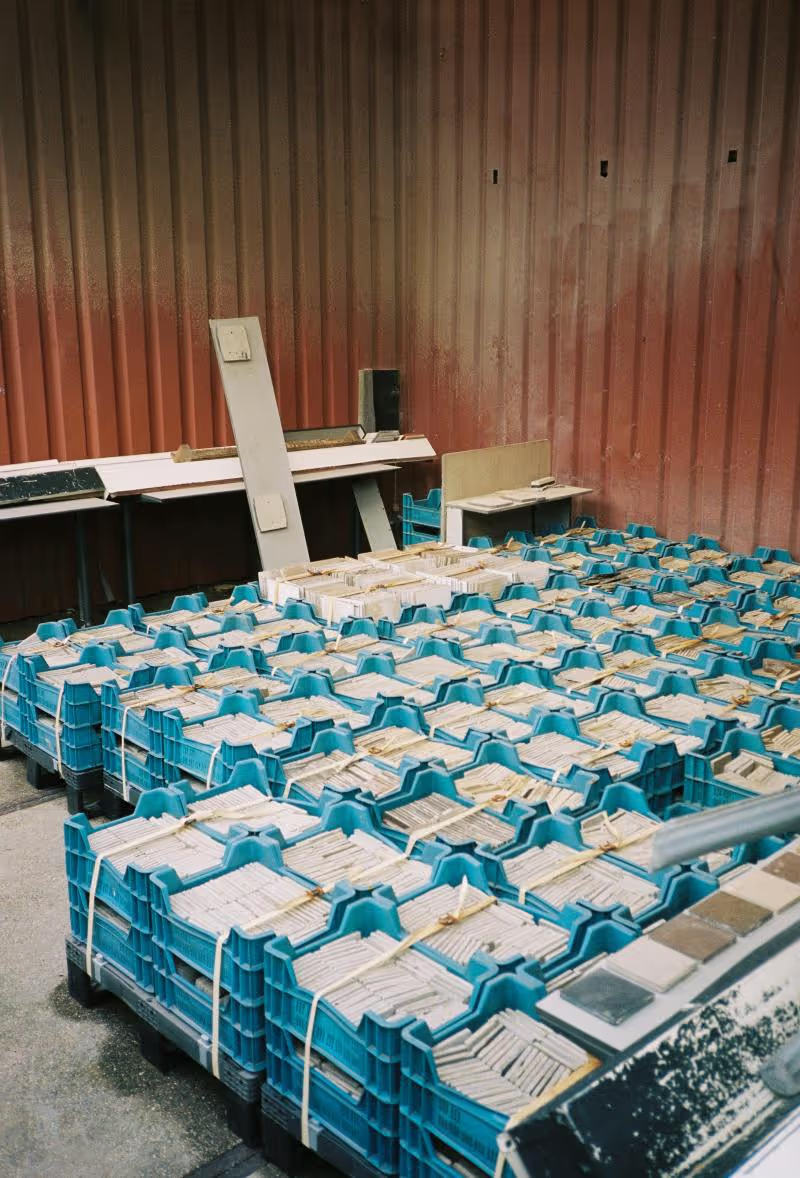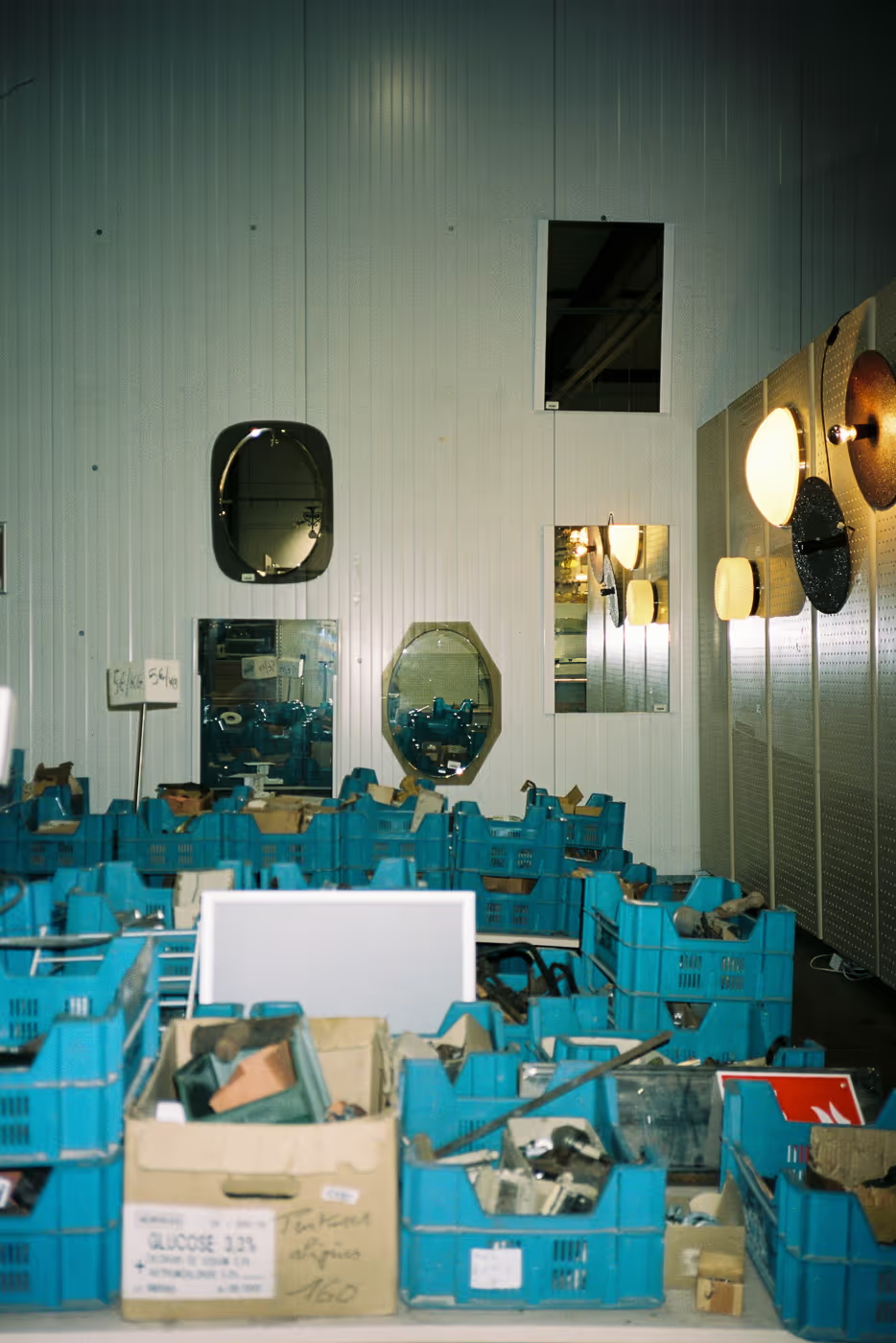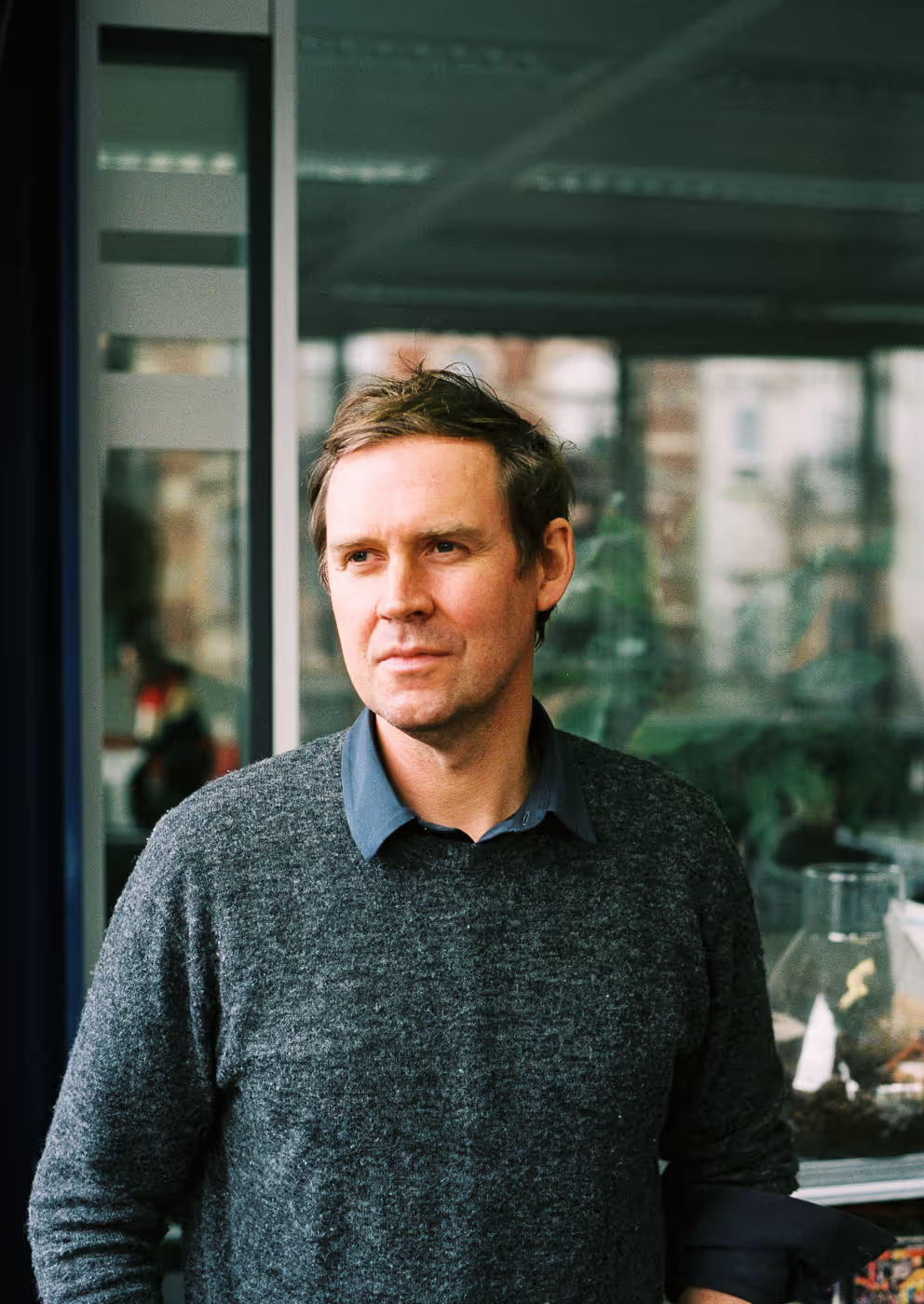





Text by Blurbs
Photo by Lukas Turcksin
Keytrade and Horst share DIY entrepreneurship as a common denominator. With ‘Their Way’ they inspire their shared philosophy through a new content series. ‘Their Way’ offers the stories of DIY entrepreneurs at the forefront of art, architecture and music. We delve into the messy, yet inspiring and insightful process of entrepreneurship. We celebrate and feature compelling stories, challenging initiatives and examples of integrity from around the world.
This month, we sit down with Lionel Devlieger, co-founder of Rotor, a Brussels-based cooperative that researches circular economy and reuse in the building sector. Their activities include design, theoretical research, policy advice and selling perfectly reusable and often unique objects and materials from demolition sites.
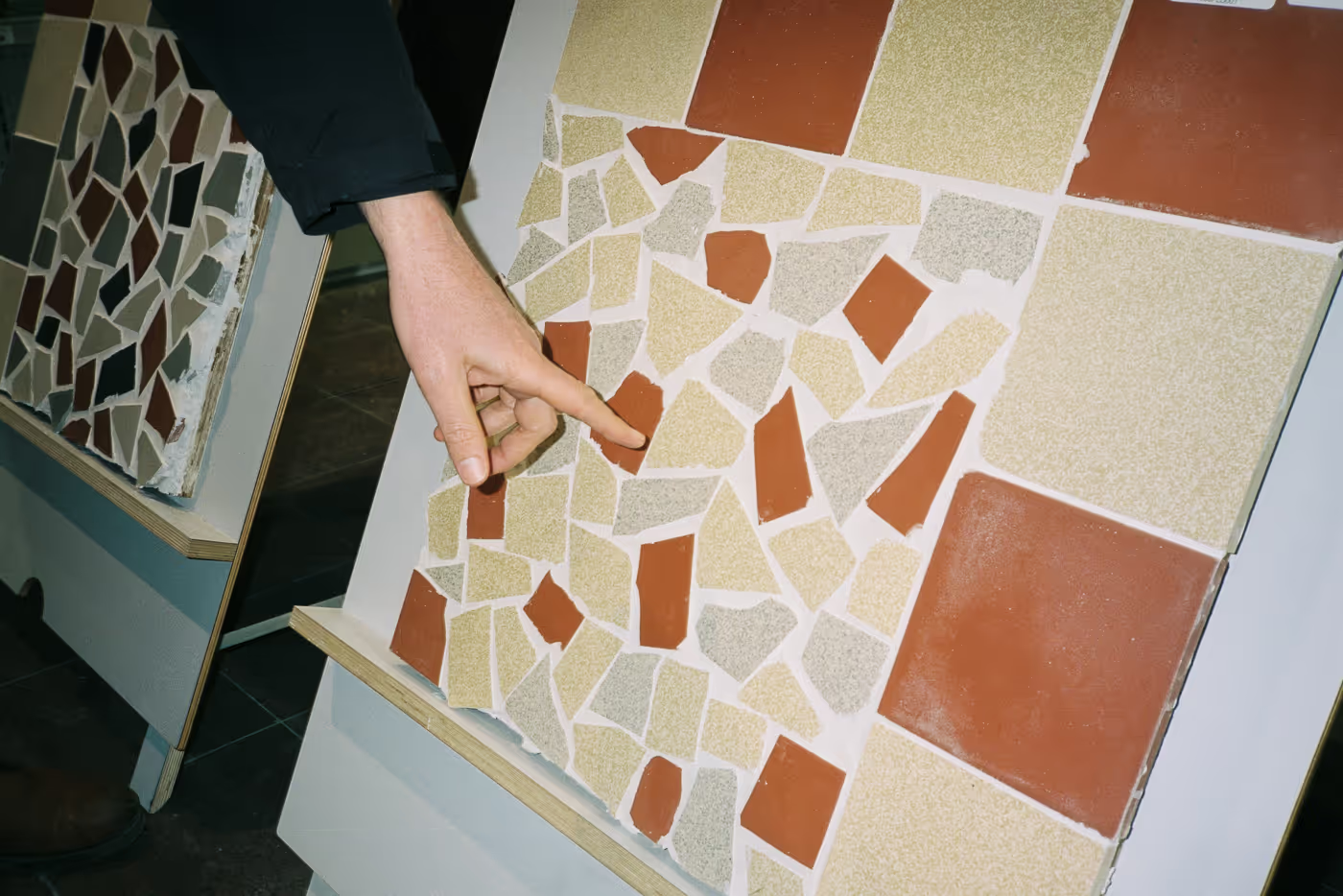
Horst: In Brussels, but also with architects throughout Belgium, Rotor has become somewhat of a household name. What is the genesis of the project?
Lionel: Maarten Gielen, Tristan Boniver and myself started collaborating in 2005, and founded Rotor as a non-profit in 2006. We actually wanted to investigate the sustainability of the raw material economy of large industries: how do companies introduce new products to the market; which are the recurring waste streams; are any of them actually eligible for reuse (for other companies, but also for artists and designers)? Throughout that research phase, around 2008-2009, our interest shifted towards the building industry: where do materials come from and what is their next destination? We had a serious look at the supposedly ‘good’ recovery strategies that exist for building and demolition waste: a brick from a demolished building can for instance be ‘recycled' by smashing it, with other inert materials, into an indistinct heap of crushed aggregate. But it can also simply be reused as a brick. Since the start of our activities, we have preferred the latter option: the most sustainable valorisation is always the one that preserves the material or the object’s integrity. As designers, we tested these findings through commissions and temporary projects. Notable are our collaboration with Kunstenfestivaldesarts, for whom we designed the visitor’s welcome pavilion for two years. Recently we did the office interiors for Zonnige Kempen, a social housing company in Westerloo. They are a pioneer in social and circular sustainable building since the 1970s. As we’re not registered as members of the Architects’ Association, these projects are actually more closely tied to interior design.
Horst: How did you end up with Rotor and Rotor DC? What is the difference between them, and how do these projects relate to each other?
{{images-1}}
Lionel: Thanks to our research, we‘ve gained a lot of theoretical expertise: what is the legal framework?; what can be done?; who is liable?… that kind of questions. We also looked into the history of our field, where reuse actually seemed to be common practice. Nowadays, buildings are considered disposable: what has caused that change? Empirical research is another crucial approach to gain insight in these processes. We visit waste sorting centres, construction and demolition sites, and dissect logistics on the ground to figure out at what stages of construction and demolition phases we can intercept materials. From all this date, we distill recommendations for governments, architects, contractors etc.
One crucial step in our work was the project opalis.be (now opalis.eu). Commissioned by the Brussels Region in 2010, we mapped out which Belgian companies are professionally concerned with reuse. We concluded there was an obvious gap when it came to contemporary materials, and also remarked that no-one was actually active in a metropolitan context such as Brussels. This was what pushed us to launch our own initiative for recuperating building materials in 2013-14. In 2016 we took it one step further and founded Rotor Deconstruction, an autonomous cooperative business. Because it was pretty obvious that a commercial set-up was the most logical for this part of our activities, it made sense to separate this from our non-profit Rotor. An immediate milestone was the demolition of the Fortis headquarters, a controversial Brutalist design adjacent to Bozar in the heart of Brussels. Contrary to its exterior aesthetics, the quality its interior was undisputed. Designed by Jules Wabbes among others, it was too valuable not to be preserved. Docomomo, a non-profit organisation that works to preserve 20th-century modernist heritage that falls just outside the scope of monument conservation, mediated with the bank that we should get on board to coordinate the demolition, and thus to prevent the destruction of valuable materials and components of the interior.
The furniture, custom-designed by Jules Wabbes, was easy to move and remained within the bank’s collection. We tried to dismantle and find a second purpose for everything else as respectfully as possible. The agreement between Rotor and Fortis was pretty extensive, legally binding and financially demanding, yet we felt we could not let this project slip away. They also set up strict sales restrictions were set up: a large number of pieces had to be presented for sale at public design collections; other elements needed to be sold together etc. We were responsible for all the costs ourselves, including the removal of several hundred tonnes of material - in containers, that definitely adds up. Specifically to deal with this project, we were obliged to rent a large storage facility in Vilvoorde. It was a prestigious endeavour and an important learning experience, which also expanded our network by sourcing the right partners. The bank's cafeteria for instance, conceived by Christophe Gevers (a prominent Belgian architect who designed several restaurants in Brussels, such as Au Vieux Saint-Martin, but also first Quick burger joint in Belgium), found a second home at Abattoirs de Bomel, a cultural centre in Namur.
Rotor comprises our design practice and theoretical research, whereas Rotor DC concerns the demolition, dismantling and sale of parts from demolition sites. Since 2017, all our activities have been housed on this site, a former chocolate factory that we can temporarily rent at a good price from CityDev.
Horst: In what way does Brussels define the nature of your practice? Why did you start here? Do you consider Brussels as the singular potential context for your work and future?

Lionel: We are often invited as consultants, or to share our expertise - just a few days ago the city council of Barcelona contacted us. We always investigate and respond to these opportunities as constructively as possible, but ultimately our practice is really site-specific and bound to a local context. In Brussels, we know what and who we’re dealing with: the politics, the regulations, the responsible officials at the different authorities, the different demolition and construction contractors. It’s an entire ecosystem, and even here we still have a ton of work to do to properly embed circularity. It’s basically impossible to move what we do to another context, or to scale up our activities in favour of growth. This idea feels like a 20th century illusion of how industry should work. It denotes an industrial mindset to imagine the simple replication of Rotor DC is possible.
Labour is at the heart of circular economy. The current functioning of our material economy is based on extremely cheap, almost tax-free raw materials that are processed in an industrial economy where labour is heavily taxed. It is more profitable to replace labour with heavy machinery, and all of this generates a wasteful economy. Our challenge is to show that an alternative business model is possible. Investments can remain modest, and by avoiding heavy machines, and instead focussing on manual labour and a direct contact with the materials, one can create a very inspiring work setting for your employers, while remaining economically healthy. Of course, we’re also anticipating what the future might bring: if a carbon tax will ever be introduced, our business model will become much more interesting. Currently, on some products, we might still be a bit more expensive than new, cheap imports. Our customers know that; but they are first and foremost motivated by environmental concerns, or they know they can get better quality materials for the same price. Hopefully, in time, the market will be regulated and we also will have clients simply coming for the best price.
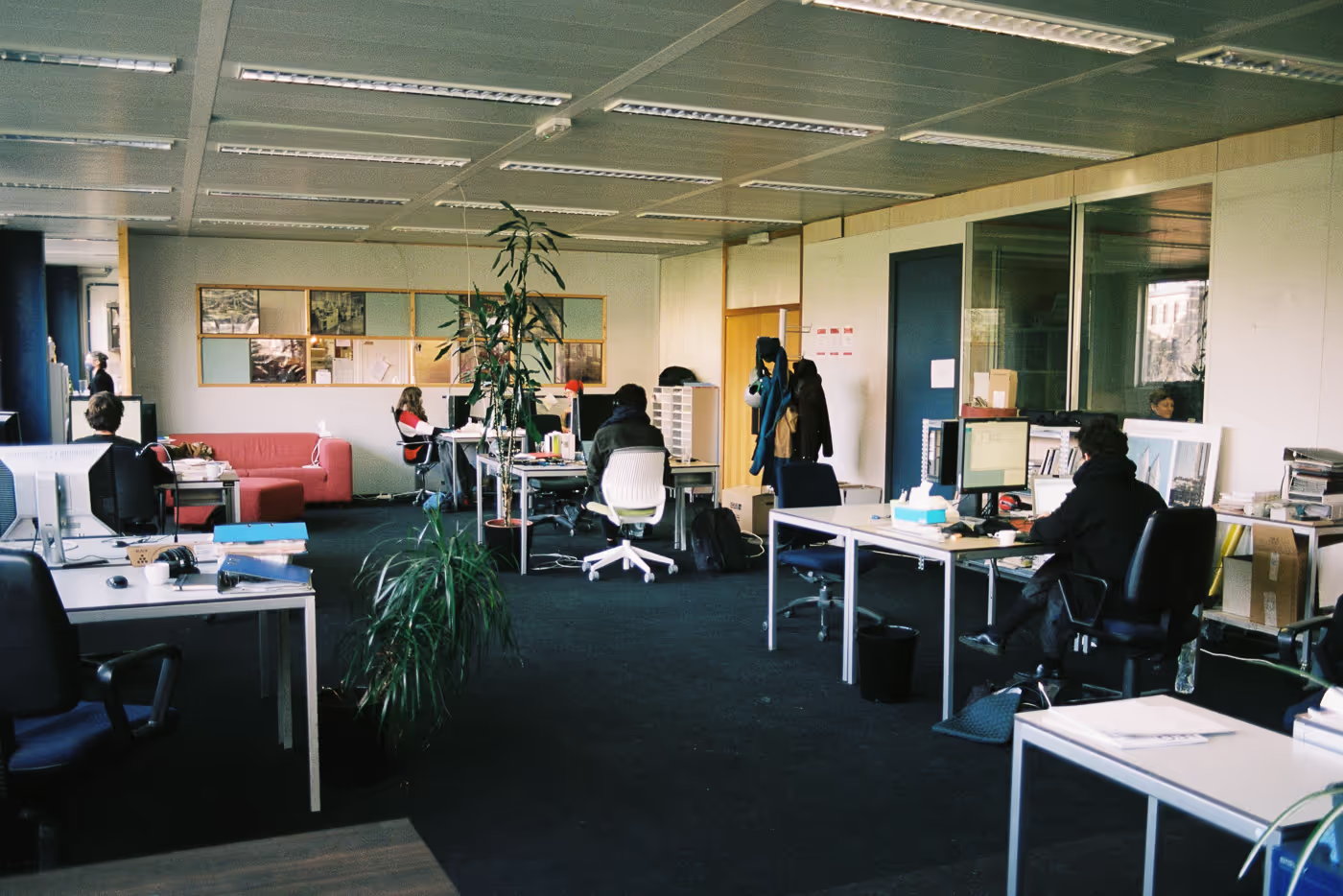
Horst: Was the motivation for Rotor socially embedded? What is the previous work experience of the founders?
Lionel: We started from an urge to let common sense prevail again in the sector. Industrial ecology has been a key concept in the early days of Rotor, although we would not refer to it now. We were, and still are, appalled by the inefficiency and waste in the construction industry. The amount of construction waste material between 2004 and now, for example, has doubled. The self-celebration of governments when communicating about high numbers in recycling in Flanders and Belgium (claimed to be 85-90%) annoyed us very much. We considered it to be a refined way of scamming people. It’s presented as recycling, but what they’re referring to is nothing more than down-cycling. Reuse in construction currently consists of a mere 1% of al the waste that is produced. Together with policymakers, we are striving for 2% by 2030; that may seem unambitious, but it’s literally double what we’re at now.
Maarten is an entrepreneur at heart, while Tristan and I come from a background of architecture and architectural theory, which did not necessarily prepare us for this job. In addition, there wasn’t exactly a blueprint for what we do. But from the beginning, we uphold the mission to stimulate reuse: whether we redesign a supermarket, write books, decorate interiors, do a lecture, or an exhibition like the one we did in The Barbican with Rem Koolhaas, it all serves the same purpose. That is why the structure of a non-profit was easy and fast, and remains sufficiently open to interpretation to allow for various activities.
"The self-celebration of governments when communicating about high numbers in recycling in Flanders and Belgium (claimed to be 85-90%) annoyed us very much. We considered it to be a refined way of scamming people."

Horst: How did you financially manage to launch Rotor?
Lionel: The non-profit structure is a rewarding one in Belgium: it allows initiatives to organise quickly and efficiently. It actually also made us eligible to apply for public grants. On the other hand, we were very much up to date with public procurements: open calls to carry out and coordinate certain researches. This type of projects often have a long life span, as well as a clearly predetermined goal, all of which facilitated keeping Rotor alive, so we could continue with our mission while continuously gaining expertise. It’s thanks to these experiences that we eventually evolved to become a center of knowledge.
Horst: Cooperation and a non-hierarchical team composition are the basis of your internal organisation. Can you tell us something more about this?
Lionel: We are an open and horizontal structure, although we don’t pretend to be purists. Having 34 employees does ignite the need for a certain chain of command. Initially everything occurred very organic, but if you don’t want to fill your week purely with meetings, some form of business management does become necessary at one point. The cooperative approach seemed to be the right move to facilitate the greatest possible involvement of all our employees: we consider Rotor a big ship where everyone has their own task, whilst aiming for the same direction. Even more important than the structure in which we operate, is a proper insight into the skills of your employees. This is really how you can optimise your business and create a healthy environment: setting up collaborations where people can complement each other, and getting the best out of them and the project.
Horst: What do you pay attention to when recruiting new employees?
Lionel: Both at Rotor DC and our non-profit Rotor, we offer 6-month internships through which young professionals contribute their fields of expertise to the company, whilst acquiring very specific skills through working with us. In reality, our geographical scope is exponentially more regional: it is useful if people who come on board can speak French and English, and preferably Dutch as well, although this heavily limits the international flux of employees. In the end, the most decisive factor is whether collaborators really understand our project, whether they can anticipate, and are willing to stick their necks out to keep the mission going: a combination of insight, talent and motivation.
{{images-2}}
Horst: Do you hope that your activities are exemplary for the whole sector? Are you in touch with policy makers?
Lionel: We like to believe that our voice is heard and respected by now, and if we have the chance to scream louder, we always will. We use our different activities, our different channels, as well as all the partners we work with to continue to generate interest and convince people of the importance of circularity and reuse.
Horst: Do you have any advice for young entrepreneurs?
Lionel: The big challenge is actually being able to say 'no'. Try to keep your focus. Stick to invitations where you feel a proper integrity in the question, ensuring that the collaboration will be motivating and enriching for your company. Over time, you will notice that you will become more demanding. Asides from economically viable, requests for partnerships should also be intellectually comfortable: meaning that your employees or clients should be competent enough to become interesting sparring partners throughout the process.
In short, collaborations must actually be beneficial and contribute to your own trajectory, whilst not compromising on your main goal.

Horst: Hopefully we are a good sparring partner, referring to our collaboration for Horst 2021. What convinced you to participate? For us, the issues of modularity, reuse and temporality vs. sustainability are becoming more and more prominent. How do you relate to this in this project?
Lionel: Horst already had a strong reputation for effectively celebrating architectural bravura, without explicitly isolating it within an architectural context. Music and art are at the heart of the initiative, and then it’s really about what kind of atmosphere you can create. As an architect or designer, this gives you the impression that you are working on something else, even though it does produce architecturally very interesting experiments. The evaluation of a design at Horst also happens instantaneously, in a direct way, by the users. All of this is very inspiring.
Overall this is a challenging commission, even more so because of the budget restrictions, giving us the impression that we’re solving an exciting Chinese puzzle. As long as not all of our projects are that demanding, we do love to take one on from time to time.
